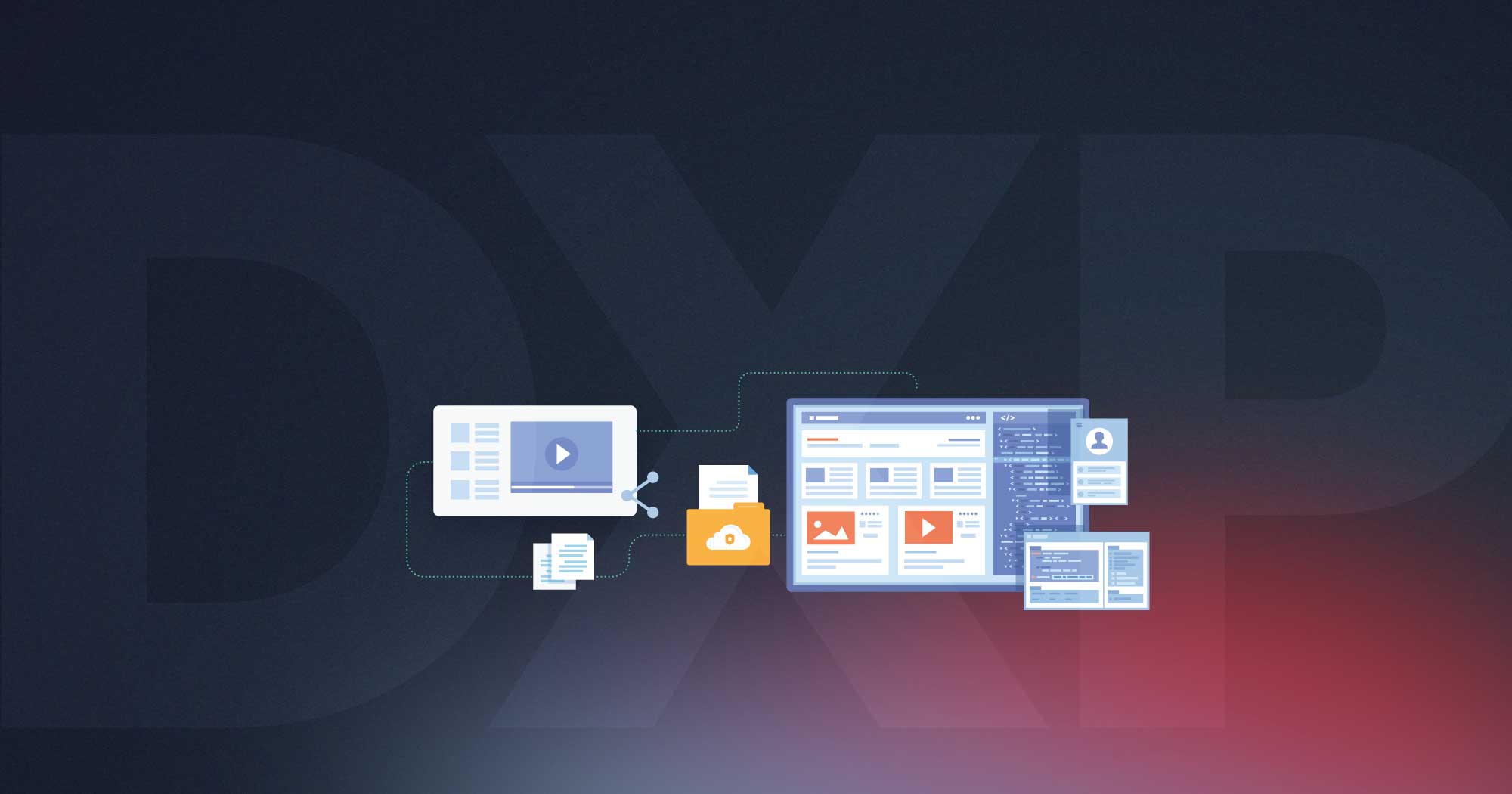Technology is making big changes in healthcare. It’s becoming increasingly clear that patients are looking for healthcare services that really focus on their needs and make things easy for them, just like online shopping does.
Think about how simple it is to shop online or set up deliveries and appointments with just a few clicks. This kind of easy and quick service is what people love about buying things online.
This same idea of getting what you need quickly and easily is starting to change healthcare too. It’s making a big difference in how patients get involved with their healthcare and how services are given to them.
These factors collectively contribute to the growing influence of eCommerce on healthcare, as they align with broader consumer expectations in a digital-first world.
The Intersection of eCommerce and Healthcare
The intersection of eCommerce and healthcare is rapidly expanding, significantly influenced by the rise in digital technologies and changing consumer behaviors. Globally, the healthcare eCommerce market has been experiencing substantial growth, driven by factors such as the increasing adoption of telemedicine, the convenience of online shopping for medical products, and the overall shift towards digital health solutions.
As of 2023, the global healthcare market is expected to grow from $309.62 billion in 2022 to $366.94 billion, with a compound annual growth rate (CAGR) of 18.5%. This growth is projected to continue, with the market expected to reach $732.3 billion by 2027. North America currently leads the market, with the Asia Pacific region not far behind.
This growth is powered by several trends. Firstly, the demand for home healthcare is rising, especially due to an aging population and an increase in chronic diseases, which have led to a surge in the online purchase of medical equipment, supplies, and prescription medications.
Additionally, there’s an increasing focus on wellness and preventive care, further fueling the growth of healthcare eCommerce. This sector mainly involves the sale of drugs and medical devices, along with applications like telemedicine, caregiving services, and medical consultation. The convenience of accessing these services online, coupled with the affordability and wide range of products, is a significant driving factor.
The COVID-19 pandemic also played a crucial role in the acceleration of healthcare eCommerce. The pandemic led to a significant increase in the demand for online healthcare services as people sought to avoid physical healthcare facilities.
What these statistics tell us is that healthcare is not only changing, it’s evolving in lock-step with consumer demand.
Why is eCommerce Driving Healthcare?
What this really boils down to is convenience. Today’s consumers (who are also patients) rely on digital tools to arrange, organize, purchase, and schedule the goods and services they require on a daily basis.
They want what they want quickly, easily, and efficiently… just like an eCommerce platform.
To illustrate this point, a significant 88% of online shoppers in 2022 said that personalization makes them more likely to continue shopping on retailer sites. Furthermore, 45% of Gen Z shoppers are likely to leave a website if it doesn’t align with their interests, wants, and needs. This highlights the crucial role of personalized experiences in retaining customers and enhancing their shopping journey .
By extension, healthcare consumers increasingly prefer the convenience and control offered by digital platforms. In fact, a recent survey tells us 72% of patients want more personalized care that is specifically tailored to their individual clinical needs. Not unlike retail applications in eCommerce platforms, personalized healthcare products and scheduling options allow patients to arrange their healthcare needs around their schedules and preferences, through the most accessible, personalized, and easy-to-use platforms possible.
Personalization can have a direct impact on patient loyalty, too. When a healthcare provider does a good job of personalizing customer interactions, 49% of patients feel like they care about earning their business and 47% are more likely to choose them.
These factors collectively contribute to the growing influence of eCommerce on healthcare, as they align with broader consumer expectations in a digital-first world.
10 Major eCommerce Trends Shaping Healthcare
In 2024, we’re seeing an array of eCommerce trends that are not just influencing healthcare but reshaping it. These trends are redefining what patients expect from online healthcare services and product catalogs, setting new standards for accessibility, convenience, and personalized care.
Here’s a glimpse at the top 10 eCommerce trends that are currently shaping the healthcare landscape:
- Increased Accessibility and Convenience: Online healthcare services and products are now more accessible due to digital and logistical advancements, enhancing user-friendliness and availability.
- Growth in Telemedicine and Digital Health Applications: A surge in healthcare-related web and mobile apps, ranging from basic health tracking to advanced digital care and virtual health assistance, is evident.
- Expansion of Online Services: Digital platforms are broadening healthcare services, including remote consultations and personalized AI-driven care.
- Enhanced Patient Engagement Through Digital Marketing: Digital marketing strategies like personalized emails and phone interactions improve patient engagement and create seamless journeys.
- The Role of Online Reviews in Patient Decision-Making: Online reviews increasingly influence patient choices, making reputation management crucial for healthcare providers.
- Adaptation to Evolving Marketing Trends: Healthcare marketing adapts to trends like voice search optimization and advanced Google Ads campaigns for continued visibility and accessibility.
- Focus on Multigenerational Marketing: Healthcare services and marketing address the unique needs of different generations, improving patient engagement and satisfaction across all age groups.
- Leveraging Data Analytics for Personalized Care: Data analytics in healthcare eCommerce enables providers to offer personalized and predictive care, enhancing patient outcomes and satisfaction.
- Integration of Wearable Technologies: Wearable technologies in healthcare, like fitness trackers and smartwatches, allow providers to monitor patient health remotely and offer timely interventions.
- Emphasis on Cybersecurity and Data Privacy: As healthcare goes digital, ensuring the security and privacy of patient data is crucial. Organizations invest in cybersecurity, and regulations like HIPAA evolve to address digital healthcare challenges.
Healthcare Challenges Introduced by eCommerce Platforms
The integration of eCommerce platforms into healthcare, while offering numerous benefits in terms of convenience and accessibility, also introduces a range of challenges. The healthcare sector, unlike typical retail environments, is bound by a complex web of legal, ethical, and clinical considerations.
For one thing, healthcare involves handling sensitive patient data. The use of eCommerce-like platforms for healthcare services necessitates stringent data protection measures to comply with regulations like HIPAA in the U.S. A healthcare provider must at all times be conscious of and proactively protective of a patient’s PHI and guard against the commercialization of that data in any context. With that in mind, must adhere to various legal standards and regulations that govern medical practices and patient confidentiality. This includes compliance with laws related to telemedicine, online pharmacies, and digital health records.

Threading eCommerce Lessons into Healthcare Platforms
Despite the above challenges, healthcare organizations, suppliers, and telehealth operators can still derive significant value from the strategies and approaches developed in the eCommerce sector. Such a shift would be characterized by a more holistic, patient-focused approach that prioritizes convenience, accessibility, and personalization, mirroring the success seen in the digital retail space.
But how can your organization take advantage of these benefits?
A fully-managed digital healthcare management solution powered by Geonetric and Optimizely DXP can significantly aid healthcare organizations in blending eCommerce practices within a HIPAA-compliant framework.
Here’s how:
- Personalization and Patient Engagement: Geonetric, in combination with Optimizely DXP, offers robust personalization capabilities. This means healthcare providers can tailor their online interactions to the individual needs and preferences of patients, much like an eCommerce platform. This personalization can extend to various aspects of digital engagement, such as personalized content, targeted health program recommendations, and individualized patient portals.
- Data Security and HIPAA Compliance: The platforms provide a secure environment for managing patient data. HIPAA compliance is critical in healthcare, and these solutions ensure that patient information is handled securely, with proper encryption and data protection measures in place. This allows for the safe handling of sensitive health information, just as securely as financial data is managed in eCommerce transactions.
- Integrated Healthcare Experiences: By using these platforms, healthcare organizations can create integrated digital experiences that streamline patient interactions with their services. This can include everything from appointment scheduling to access to medical records and telehealth services, mirroring the ease and efficiency of eCommerce platforms.
- Content Management and Marketing: The content management capabilities of Geonetric and Optimizely DXP allow healthcare organizations to effectively disseminate information and market their services. This can include educational content, health program promotions, and targeted campaigns, all managed through a user-friendly interface.
- Analytics and Optimization: With robust analytics tools, healthcare providers can analyze patient behaviors and preferences to continuously improve their digital services. This mirrors the eCommerce approach of using data-driven insights to optimize the user experience.
- Scalability and Flexibility: The platforms are scalable and flexible, allowing healthcare organizations to expand their digital offerings as needed. This is particularly important in the rapidly evolving digital healthcare landscape, where adapting to new technologies and patient needs is crucial.
- User Experience Design: Geonetric and Optimizely DXP focus on creating optimal user experiences, which is a cornerstone of successful eCommerce platforms. A well-designed user interface that is easy to navigate and accessible can significantly enhance patient satisfaction and engagement.
A digital healthcare management partnership like the one offered by Geonetric and Optimizely DXP enables healthcare organizations to meet the rising demands of eCommerce within a secure and compliant framework. It allows for personalized, efficient, and secure digital healthcare experiences that are patient-centric and data-driven, aligning with the best practices of eCommerce while adhering to the stringent requirements of healthcare regulations like HIPAA.
If your organization could benefit from a supercharged patient-experience, download our FREE eBook today to learn more.










